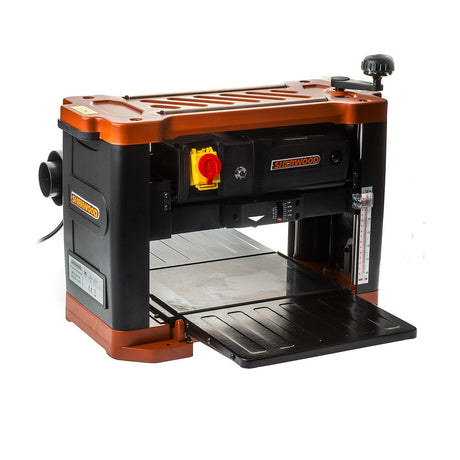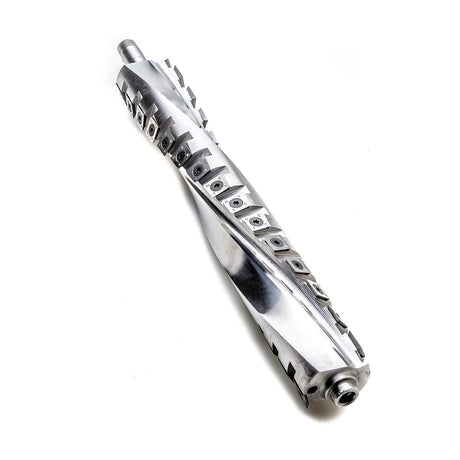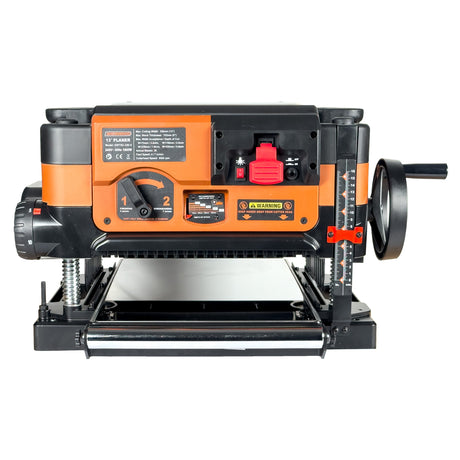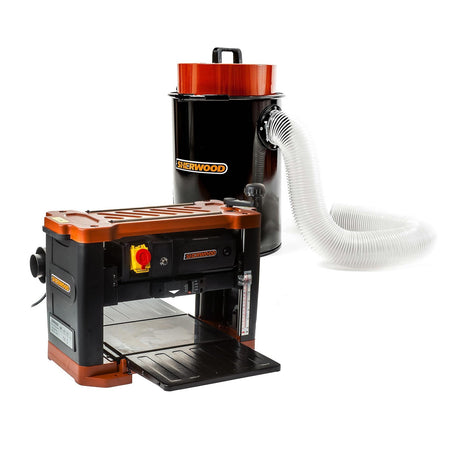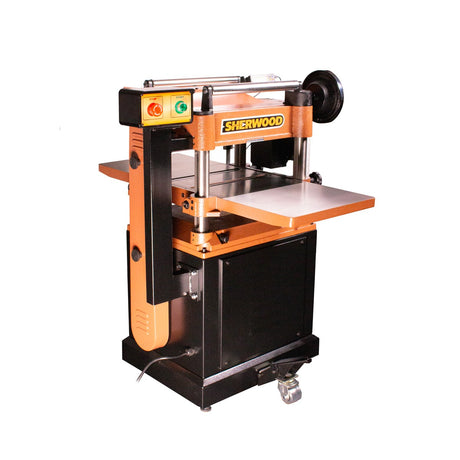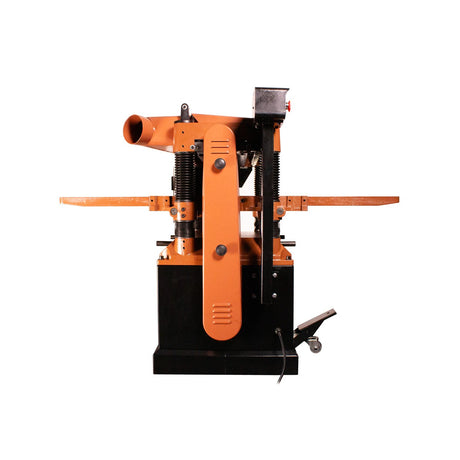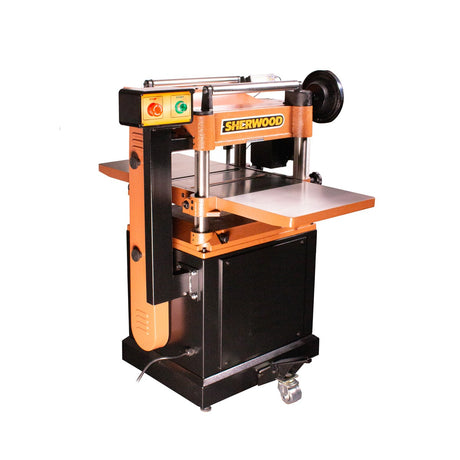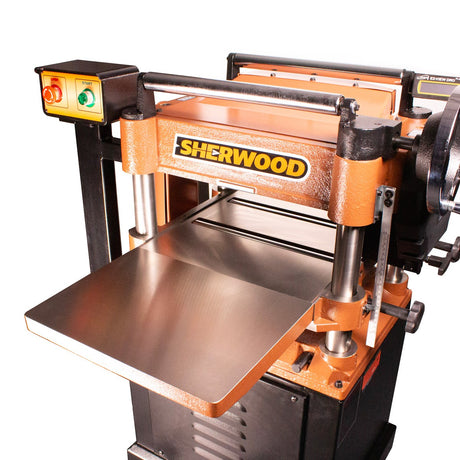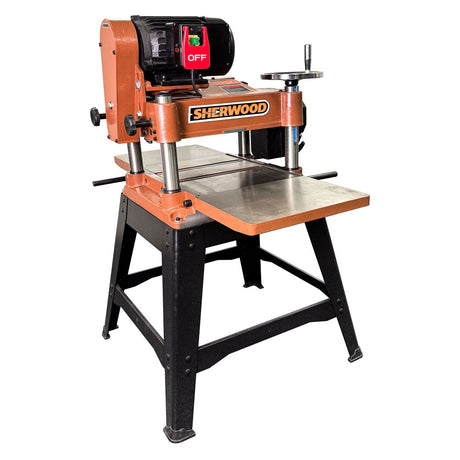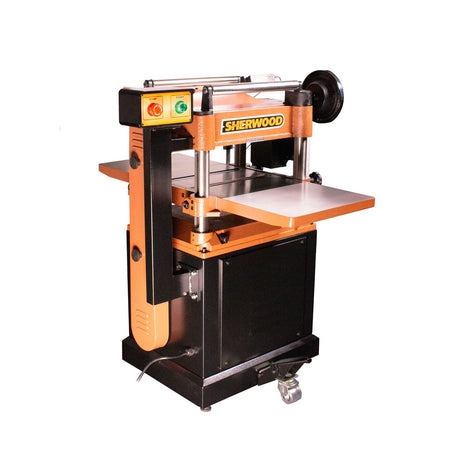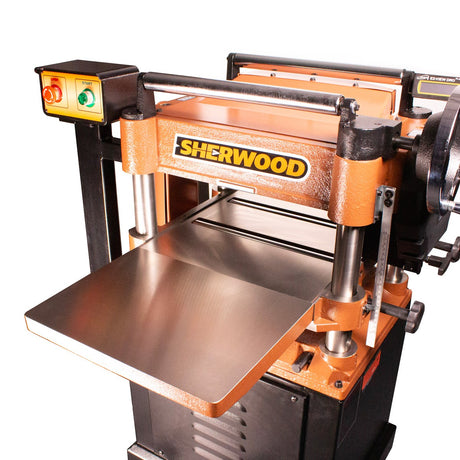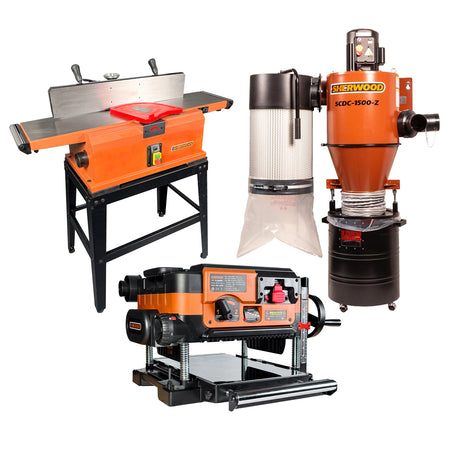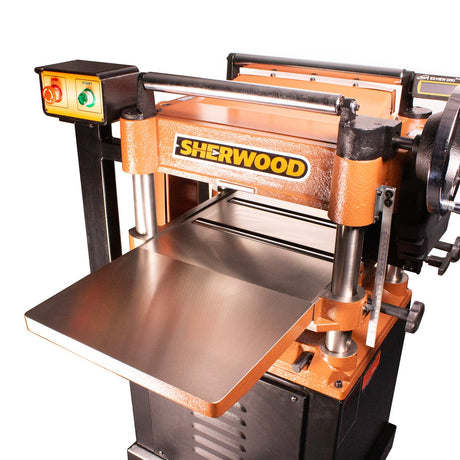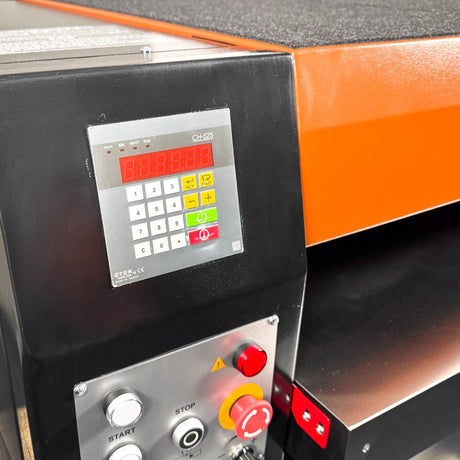Sherwood
Sherwood 13in Deluxe Benchtop Thicknesser with Helical Cutterhead 1500W 2HP
$999.00$1,199.00Unit price /UnavailableIn stockSherwood
Sherwood 13in Benchtop Pro Thicknesser with Helical Cutterhead 1800W
$1,349.00$1,499.00Unit price /UnavailableIn stockSherwood
$1,179.00$1,428.00Unit price /UnavailableIn stockSherwood
Sherwood 16in Industrial Thicknesser Helical Cutterhead Single Phase 2200W 3HP
$3,689.00$4,099.00Unit price /UnavailableVery low stock (2 units)Sherwood
Sherwood 20in Industrial Thicknesser Helical Cutterhead Single Phase 3750W 5HP
$5,219.00$5,799.00Unit price /UnavailableIn stockSherwood
Sherwood 13in Benchtop Thicknesser with Straight Blade Cutterhead 1500W 2HP
$611.00$679.00Unit price /UnavailableIn stockSherwood
Sherwood 16in Industrial Thicknesser Straight Cutterhead Single Phase 2200W 3HP
$1,999.00$2,699.00Unit price /UnavailableSherwood
Sherwood 15in Heavy-Duty Portable Thicknesser 2200W 3HP with Helical Head
$2,959.00$3,699.00Unit price /UnavailableVery low stock (1 unit)Sherwood
Sherwood 20in Industrial Thicknesser Helical Cutterhead Three Phase 3750W 5HP
$5,399.00$5,999.00Unit price /UnavailableSherwood
Sherwood 16in Industrial Thicknesser Helical Cutterhead Three Phase 2200W 3HP
$3,779.00$4,199.00Unit price /UnavailableVery low stock (1 unit)Sherwood
SAMPLE - Sherwood 16in Euro Style Thicknesser 406mm 3000W 4HP with Helical Cutterhead
$4,124.00$5,499.00Unit price /UnavailableVery low stock (1 unit)Sherwood
Sherwood Pro Thicknesser Cyclone Bundle
$4,999.00$5,282.50Unit price /UnavailableIn stockSherwood
Sherwood 13in Benchtop Pro Thicknesser with Straight Cutterhead 1800W
$1,034.00$1,149.00Unit price /UnavailableIn stockSherwood
Sherwood 16in Industrial Thicknesser Straight Cutterhead Three Phase 2200W 3HP
$2,699.00Unit price /UnavailableVery low stock (1 unit)Sherwood
Sherwood 25in Euro Style Thicknesser 630mm Three Phase 7500W 10HP with Helical Cutterhead
$13,499.00$14,999.00Unit price /UnavailableIn stockSherwood
Sherwood 15in Heavy-Duty Portable Thicknesser 2200W 3HP
$1,875.00$2,499.00Unit price /UnavailableIn stock
Understanding Thicknessers: Achieving Consistent Timber Finishes
Thicknessers are essential tools for woodworkers aiming to produce consistent and smooth timber surfaces. By feeding timber through the machine, users can precisely reduce the thickness of a board while maintaining its flatness. This is particularly useful for preparing rough-sawn or reclaimed timber, ensuring each piece is dimensionally uniform for joinery, cabinetry, or fine woodworking projects.
Sherwood thicknessers are known for their robust construction and user-focused features, making them suitable for both hobbyist and professional workshops. Key features across the range include spiral cutterheads for quieter and cleaner cuts, digital readouts for precision adjustment, and integrated dust extraction ports to maintain a clean workspace. Whether you're working on hardwoods or softwoods, these machines provide reliable performance and accuracy.
When selecting a thicknesser, consider the maximum width and depth of cut required for your typical projects. Larger benchtop and floor-standing models are ideal for high-volume or wide-board processing, while compact units suit smaller workshops. It's also important to ensure the infeed and outfeed tables are properly adjusted and supported to prevent snipe, a common issue when planing longer boards.
Regular maintenance, such as keeping blades sharp or ensuring spiral inserts are rotated and aligned, will prolong the life of your machine and deliver cleaner cuts. Proper dust extraction setup not only extends tool longevity but also improves safety and air quality in the workshop. Investing time in setup and care ensures consistently high-quality finishes on all your timber projects.
FAQs
What does a thicknesser do?
A thicknesser trims timber boards to a consistent thickness while flattening the surface. It ensures parallel faces and uniform thickness across all boards, which is essential for joinery and precision work.
What’s the difference between a jointer and a thicknesser?
A jointer flattens one face and straightens one edge of a board, while a thicknesser makes the opposite face parallel to the flattened one and brings the board to a uniform thickness. Both are often used together for best results.
Do I need a spiral cutterhead in my thicknesser?
Spiral cutterheads offer smoother finishes, reduced tear-out (especially in figured or interlocked grain), and quieter operation compared to traditional straight blades. They're highly recommended for demanding work or hardwoods.
How can I avoid snipe when using a thicknesser?
Snipe is a shallow dip at the ends of boards. To reduce it, ensure infeed and outfeed tables are level, support longer boards during feed, and feed multiple boards end-to-end to keep pressure consistent under the cutterhead.
Can I use a thicknesser on rough-sawn timber?
Yes, but it's best to flatten one face with a jointer or hand plane first. Feeding a warped or cupped board directly into a thicknesser may result in uneven cuts or kickback. Start with one stable reference face.
How often should I rotate or replace spiral inserts?
Spiral inserts should be rotated when you notice a decline in cut quality, such as tear-out or burn marks. Most inserts have four edges and can be rotated three times before replacement is needed.
What size thicknesser should I choose?
Choose based on the width of timber you typically work with. A 13–15 inch benchtop model suits most home workshops, while larger floor-standing models are ideal for professional use and wide timber boards.
Is dust extraction necessary for a thicknesser?
Yes, thicknessers generate a large volume of chips and dust. A proper dust extraction system improves visibility, prevents clogging, protects your lungs, and extends the life of the machine by reducing debris buildup.
Can I thickness reclaimed timber with nails or metal in it?
It's risky. Metal can damage cutterheads or cause injury. Always check and remove embedded nails or screws before using a thicknesser. Use a metal detector if necessary to locate hidden fasteners.

